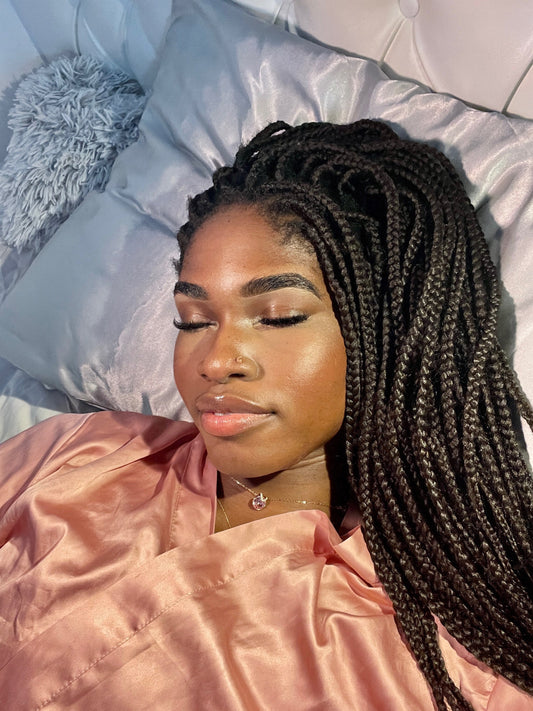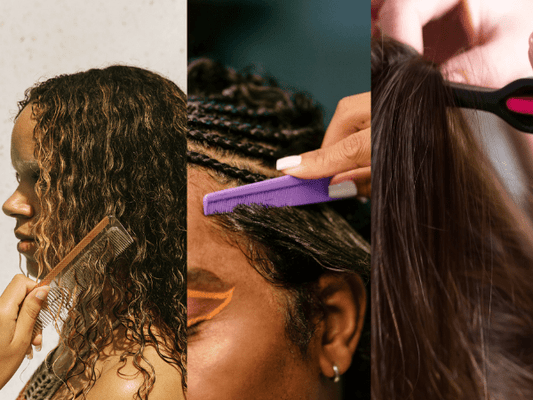1. Extreme Dryness and Dullness
One of the most evident signs of damaged hair is extreme dryness. Healthy hair has a natural sheen and softness, thanks to the oils produced by the scalp that coat the hair shaft. When hair is seriously damaged, it loses its ability to retain moisture, resulting in a dull, lifeless appearance. This dryness is not merely a surface issue but indicates that the hair's structure has been compromised, making it difficult for hair to absorb or retain moisture from conditioners or treatments.
How to Address It: Incorporate intensive hydrating masks and leave-in conditioners into your routine. Look for products rich in natural oils and humectants like glycerin that draw moisture into the hair. Reducing the frequency of shampooing can also help preserve natural oils.
2. Increased Breakage and Split Ends
Hair is naturally elastic and strong, but when it's damaged, its structural integrity is weakened, leading to increased breakage and split ends. If you notice that your hair snaps off easily when combing or styling, or if split ends become more prevalent, it's a clear sign that your hair's keratin bonds are damaged. This weakening of hair can be due to mechanical stress, like rough handling and detangling, or chemical processes, like coloring and perming.
How to Address It: Trim your hair regularly to remove split ends and prevent further splitting up the hair shaft. Minimize the use of heat styling tools and harsh chemical treatments. Use a wide-tooth comb to gently detangle hair, starting from the ends and working your way up.
3. Texture Changes
Healthy hair has a consistent texture, whether straight, wavy, or curly. Serious damage can alter this natural texture, making hair feel rough, straw-like, or overly coarse. You may also notice that your natural curls or waves are less defined and more difficult to style. Texture changes are a sign that the cuticles, the protective outer layer of the hair shaft, are damaged, affecting how hair feels and behaves.
How to Address It: Use protein treatments sparingly to rebuild and strengthen the hair shaft. However, be cautious not to over-proteinize your hair, as this can make it brittle. Balance protein treatments with deep conditioning to maintain moisture.
4. Tangles and Knots
While some tangling is normal, especially for curly and long hair, excessive tangling and knots can indicate serious damage. Damaged hair has raised cuticles, making individual strands more likely to catch on each other and form tangles. This not only makes detangling a painful chore but also leads to more breakage and damage during the process.
How to Address It: Use a detangling spray or a lightweight conditioner to ease the detangling process. Detangle hair when it's damp using a wide-tooth comb or your fingers, and always start from the ends, gradually working your way up to the roots.
5. Lack of Elasticity
Hair elasticity refers to its ability to stretch and return to its original length without breaking. This quality is essential for healthy hair, contributing to its strength and resilience. Seriously damaged hair loses its elasticity, becoming brittle and rigid. A simple test for elasticity is to gently stretch a wet strand of hair; if it breaks easily rather than stretching, it's a sign of poor elasticity and serious damage.
How to Address It: Focus on restoring moisture and protein balance. Hydrating treatments and occasional protein-based products can help improve elasticity over time. Also, be gentle with your hair, especially when it's wet, to avoid further stress and breakage.
Conclusion
Recognizing these warning signs of serious hair damage is the first step toward rehabilitating your hair. By addressing these issues with targeted care strategies, it's possible to restore your hair's health and vitality. Remember, prevention is key. Protect your hair from potential damage by minimizing exposure to harsh chemicals, heat, and environmental stressors. With patience and the right care, you can revive even the most damaged hair, bringing it back to its natural strength and shine.











